Overcoming phenotypic switching: targeting protein-protein interactions in cancer
Alternative protein-protein interactions (PPIs) arising from mutations or post-translational modifications (PTMs), termed phenotypic switching (PS), are critical for the transmission of alternative
[...] Read more.
Alternative protein-protein interactions (PPIs) arising from mutations or post-translational modifications (PTMs), termed phenotypic switching (PS), are critical for the transmission of alternative pathogenic signals and are particularly significant in cancer. In recent years, PPIs have emerged as promising targets for rational drug design, primarily because their high specificity facilitates targeting of disease-related signaling pathways. However, obstacles exist at the molecular level that arise from the properties of the interaction interfaces and the propensity of small molecule drugs to interact with more than one cleft surface. The difficulty in identifying small molecules that act as activators or inhibitors to counteract the biological effects of mutations raises issues that have not been encountered before. For example, small molecules can bind tightly but may not act as drugs or bind to multiple sites (interaction promiscuity). Another reason is the absence of significant clefts on protein surfaces; if a pocket is present, it may be too small, or its geometry may prevent binding. PS, which arises from oncogenic (alternative) signaling, causes drug resistance and forms the basis for the systemic robustness of tumors. In this review, the properties of PPI interfaces relevant to the design and development of targeting drugs are examined. In addition, the interactions between three tyrosine kinase inhibitors (TKIs) employed as drugs are discussed. Finally, potential novel targets of one of these drugs were identified in silico.
Christos Ladias ... Nikolaos A. Papanikolaou
Alternative protein-protein interactions (PPIs) arising from mutations or post-translational modifications (PTMs), termed phenotypic switching (PS), are critical for the transmission of alternative pathogenic signals and are particularly significant in cancer. In recent years, PPIs have emerged as promising targets for rational drug design, primarily because their high specificity facilitates targeting of disease-related signaling pathways. However, obstacles exist at the molecular level that arise from the properties of the interaction interfaces and the propensity of small molecule drugs to interact with more than one cleft surface. The difficulty in identifying small molecules that act as activators or inhibitors to counteract the biological effects of mutations raises issues that have not been encountered before. For example, small molecules can bind tightly but may not act as drugs or bind to multiple sites (interaction promiscuity). Another reason is the absence of significant clefts on protein surfaces; if a pocket is present, it may be too small, or its geometry may prevent binding. PS, which arises from oncogenic (alternative) signaling, causes drug resistance and forms the basis for the systemic robustness of tumors. In this review, the properties of PPI interfaces relevant to the design and development of targeting drugs are examined. In addition, the interactions between three tyrosine kinase inhibitors (TKIs) employed as drugs are discussed. Finally, potential novel targets of one of these drugs were identified in silico.
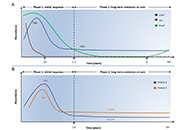 A decade of CD4+ chimeric antigen receptor T-cell evolution in two chronic lymphocytic leukemia patients: were chronic lymphocytic leukemia cells present?Open AccessCommentaryOn Feb 2, 2022, Nature published the paper titled “Decade-long leukemia remissions with the persistence of CD4+ CAR T-cells” (Nature. 2022;602:503–9. doi: 10.1038/s41586-021-04390-6). Accordin [...] Read more.Dimitrios Bouzianas, Stella BouzianaPublished: October 31, 2023 Explor Target Antitumor Ther. 2023;4:1128–1135
A decade of CD4+ chimeric antigen receptor T-cell evolution in two chronic lymphocytic leukemia patients: were chronic lymphocytic leukemia cells present?Open AccessCommentaryOn Feb 2, 2022, Nature published the paper titled “Decade-long leukemia remissions with the persistence of CD4+ CAR T-cells” (Nature. 2022;602:503–9. doi: 10.1038/s41586-021-04390-6). Accordin [...] Read more.Dimitrios Bouzianas, Stella BouzianaPublished: October 31, 2023 Explor Target Antitumor Ther. 2023;4:1128–1135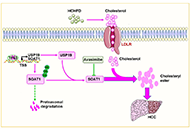 Cholesterol esterification and p53-mediated tumor suppressionOpen AccessPerspectiveMany human cancers carry missense mutations in or deletions of the tumor protein 53 (TP53) tumor suppressor gene. TP53’s product, p53 regulates many biological processes, including cell metabolism [...] Read more.Youjun Li ... Edward V. ProchownikPublished: October 31, 2023 Explor Target Antitumor Ther. 2023;4:1122–1127
Cholesterol esterification and p53-mediated tumor suppressionOpen AccessPerspectiveMany human cancers carry missense mutations in or deletions of the tumor protein 53 (TP53) tumor suppressor gene. TP53’s product, p53 regulates many biological processes, including cell metabolism [...] Read more.Youjun Li ... Edward V. ProchownikPublished: October 31, 2023 Explor Target Antitumor Ther. 2023;4:1122–1127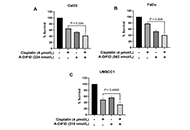 Acryl-3,5-bis(2,4-difluorobenzylidene)-4-piperidone targeting cellular JUN proto-oncogene, AP-1 transcription factor subunit inhibits head and neck squamous cell carcinoma progressionOpen AccessOriginal ArticleAim: Head and neck squamous cell carcinoma (HNSCC) is the seventh most common cancer worldwide with a survival rate below fifty percent. Addressing meager therapeutic options, a series of small m [...] Read more.Levi Arnold ... Sufi Mary ThomasPublished: October 31, 2023 Explor Target Antitumor Ther. 2023;4:1104–1121
Acryl-3,5-bis(2,4-difluorobenzylidene)-4-piperidone targeting cellular JUN proto-oncogene, AP-1 transcription factor subunit inhibits head and neck squamous cell carcinoma progressionOpen AccessOriginal ArticleAim: Head and neck squamous cell carcinoma (HNSCC) is the seventh most common cancer worldwide with a survival rate below fifty percent. Addressing meager therapeutic options, a series of small m [...] Read more.Levi Arnold ... Sufi Mary ThomasPublished: October 31, 2023 Explor Target Antitumor Ther. 2023;4:1104–1121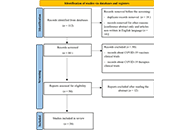 Impact of coronavirus disease 2019 pandemic on good clinical practice trials in oncologyOpen AccessSystematic ReviewAim: Coronavirus disease 2019 (COVID-19) became pandemic on 11th March 2020 and it deeply stressed the healthcare system. Cancer patients represent a vulnerable population, so many recommendation [...] Read more.Veronica Agostinelli ... Rossana BerardiPublished: October 30, 2023 Explor Target Antitumor Ther. 2023;4:1095–1103
Impact of coronavirus disease 2019 pandemic on good clinical practice trials in oncologyOpen AccessSystematic ReviewAim: Coronavirus disease 2019 (COVID-19) became pandemic on 11th March 2020 and it deeply stressed the healthcare system. Cancer patients represent a vulnerable population, so many recommendation [...] Read more.Veronica Agostinelli ... Rossana BerardiPublished: October 30, 2023 Explor Target Antitumor Ther. 2023;4:1095–1103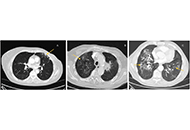 Coronavirus disease 2019 and lung cancer: where are we?Open AccessReviewOncology patients are more susceptible to severe acute respiratory syndrome coronavirus 2 (SARS-CoV-2) infection due to hospital contact and an immunological system that can be compromised by antine [...] Read more.Abrahams Ocanto ... Felipe CouñagoPublished: October 30, 2023 Explor Target Antitumor Ther. 2023;4:1082–1094
Coronavirus disease 2019 and lung cancer: where are we?Open AccessReviewOncology patients are more susceptible to severe acute respiratory syndrome coronavirus 2 (SARS-CoV-2) infection due to hospital contact and an immunological system that can be compromised by antine [...] Read more.Abrahams Ocanto ... Felipe CouñagoPublished: October 30, 2023 Explor Target Antitumor Ther. 2023;4:1082–1094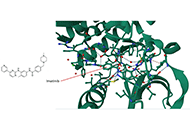 Overcoming phenotypic switching: targeting protein-protein interactions in cancerOpen AccessReviewAlternative protein-protein interactions (PPIs) arising from mutations or post-translational modifications (PTMs), termed phenotypic switching (PS), are critical for the transmission of alternative [...] Read more.Christos Ladias ... Nikolaos A. PapanikolaouPublished: October 30, 2023 Explor Target Antitumor Ther. 2023;4:1071–1081
Overcoming phenotypic switching: targeting protein-protein interactions in cancerOpen AccessReviewAlternative protein-protein interactions (PPIs) arising from mutations or post-translational modifications (PTMs), termed phenotypic switching (PS), are critical for the transmission of alternative [...] Read more.Christos Ladias ... Nikolaos A. PapanikolaouPublished: October 30, 2023 Explor Target Antitumor Ther. 2023;4:1071–1081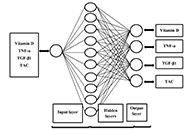 Effect of vitamin D supplementation on inflammatory markers and total antioxidant capacity in breast cancer women using a machine learning techniqueOpen AccessOriginal ArticleAim: This study aimed to establish a learning system using an artificial neural network (ANN) to predict the effects of vitamin D supplementation on the serum levels of vitamin D, inflammatory fa [...] Read more.Marzieh Tahmasebi ... Amir JamshidnezhadPublished: October 30, 2023 Explor Target Antitumor Ther. 2023;4:1059–1070
Effect of vitamin D supplementation on inflammatory markers and total antioxidant capacity in breast cancer women using a machine learning techniqueOpen AccessOriginal ArticleAim: This study aimed to establish a learning system using an artificial neural network (ANN) to predict the effects of vitamin D supplementation on the serum levels of vitamin D, inflammatory fa [...] Read more.Marzieh Tahmasebi ... Amir JamshidnezhadPublished: October 30, 2023 Explor Target Antitumor Ther. 2023;4:1059–1070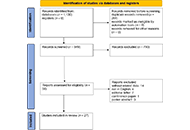 Effect of coronavirus disease 2019 on diagnosis and treatment of hepatocellular carcinoma: a systematic reviewOpen AccessSystematic ReviewAim: Changes in strategies in the coronavirus disease 2019 (COVID-19) crisis and the imposing of restrictions have isolated many vulnerable patients including those with hepatocellular carcinoma [...] Read more.Afrooz Mazidimoradi ... Hamid SalehiniyaPublished: October 26, 2023 Explor Target Antitumor Ther. 2023;4:1039–1058
Effect of coronavirus disease 2019 on diagnosis and treatment of hepatocellular carcinoma: a systematic reviewOpen AccessSystematic ReviewAim: Changes in strategies in the coronavirus disease 2019 (COVID-19) crisis and the imposing of restrictions have isolated many vulnerable patients including those with hepatocellular carcinoma [...] Read more.Afrooz Mazidimoradi ... Hamid SalehiniyaPublished: October 26, 2023 Explor Target Antitumor Ther. 2023;4:1039–1058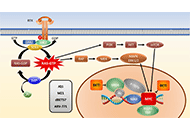 Integration of signaling pathway and bromodomain and extra-terminal domain inhibition for the treatment of mutant Kirsten rat sarcoma viral oncogene homolog cancerOpen AccessReviewMutant Kirsten rat sarcoma viral oncogene homolog (KRAS) is now a drugable oncogenic driver and the KRAS G12C variant responds clinically to sotorasib and adagrasib that covalently block the cystein [...] Read more.Gerhard Hamilton ... Barbara RathPublished: October 26, 2023 Explor Target Antitumor Ther. 2023;4:1027–1038
Integration of signaling pathway and bromodomain and extra-terminal domain inhibition for the treatment of mutant Kirsten rat sarcoma viral oncogene homolog cancerOpen AccessReviewMutant Kirsten rat sarcoma viral oncogene homolog (KRAS) is now a drugable oncogenic driver and the KRAS G12C variant responds clinically to sotorasib and adagrasib that covalently block the cystein [...] Read more.Gerhard Hamilton ... Barbara RathPublished: October 26, 2023 Explor Target Antitumor Ther. 2023;4:1027–1038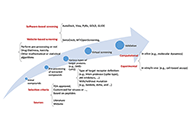 A review on in silico virtual screening methods in COVID-19 using anticancer drugs and other natural/chemical inhibitorsOpen AccessReviewThe present coronavirus disease 2019 (COVID-19) pandemic scenario has posed a difficulty for cancer treatment. Even under ideal conditions, malignancies like small cell lung cancer (SCLC) are challe [...] Read more.Babak SokoutiPublished: October 26, 2023 Explor Target Antitumor Ther. 2023;4:994–1026
A review on in silico virtual screening methods in COVID-19 using anticancer drugs and other natural/chemical inhibitorsOpen AccessReviewThe present coronavirus disease 2019 (COVID-19) pandemic scenario has posed a difficulty for cancer treatment. Even under ideal conditions, malignancies like small cell lung cancer (SCLC) are challe [...] Read more.Babak SokoutiPublished: October 26, 2023 Explor Target Antitumor Ther. 2023;4:994–1026